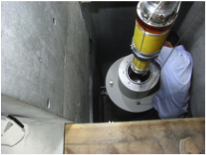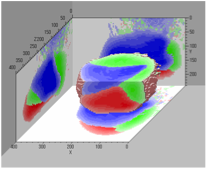Low Temperature Physics Laboratory specializes in ultra low temperature refrigeration technique, which enable us to cool down macroscopic objects to micro Kelvin temperature using nuclear adiabatic demagnetization cryostat. At such an extreme temperature, we study the properties of quantum condensates such as superfluid 3He. We are interested in studying universal properties of quantum condensate rather than studying specialized properties of some particular materials. That's why we work on the idealy simple quantum fluid and solid, namely liquid and solid helium.
Universal Physics being Studied with Helium
|
Our understanding on the bulk quantum fluid and solid has reached to very precise level. Recently research interest has elaborated to study spatially inhomogeneous system based on the established understanding on the bulk homogeneous system. These systems have been studied with the help of theoretical modeling on the spatially varying state. To further improve our understanding on the inhomogeneous system without relying on the theoretical model, we have developed a unique ultra low temperature magnetic resonance imaging (MRI) technique to directly measure spatial variation of the macroscopic wave function at ultra low temperature.
|
 |
Studying Quantum Condensate in Restricted Geometry
|
We are seeking for new quantum condensate, which can be stabilized by confining into restricted geometries, such as low dimensional space or multiply connected space. We also study unique elementary excitations, which exist near the boundary of the half space and interface between two quantum condensate with different symmetry, and quantized vortices and domain walls, which are stabilized under topological constraints.
|
 |
Developing Cryogenic Technology
|
In our research style, we prefer not to repeat the same kind of measurements on different materials. Instead, we change the measurement itself to seek for new physics while working on the same material, namely helium. To continue this way and find new physics, we keep developing new and unique measurement technique. We have been developing advanced nuclear magnetic resonance (NMR), magnetic resonance imaging (MRI), SQUID based sensing system for extremely small signal, ultrasound measurement, microscopic mechanical oscillator measurement. We wish to be an only-one research group by developing original and unique technique.
|
 |
